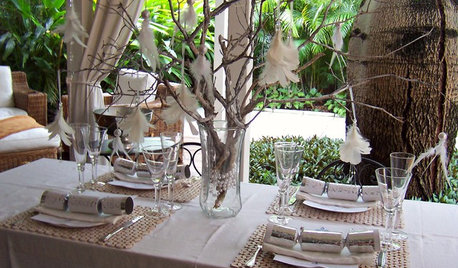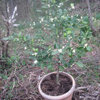Gooey white and black on citrus
DoobieSnax
12 years ago
Related Stories

COLORColor of the Week: 10 Tangy Ways with Citrus Green
Add some zest to your home with a little — or a lot of — lively lime
Full Story
WHITERoom of the Day: Bye-Bye, Black Bidet — Hello, Classic Carrara
Neutral-colored materials combine with eclectic accessories to prepare a master bath for resale while adding personal style
Full Story
COLORColor of the Year: Off-White Is On Trend for 2016
See why four paint brands have chosen a shade of white as their hot hue for the new year
Full Story
KITCHEN DESIGNDream Spaces: 12 Beautiful White Kitchens
Snowy cabinets and walls speak to a certain elegance, while marble counters whisper of luxury
Full Story
KITCHEN DESIGNUsing White Marble: Hot Debate Over a Classic Beauty
Do you love perfection or patina? Here's how to see if marble's right for you
Full Story
HOUSEKEEPINGHow to Keep Your White Spaces Looking Great
Brighten up your white walls, floors and furniture with these cleaning and maintenance tips
Full Story
HOLIDAYSHave a Festive, Sun-Drenched White Christmas
If you live in a warm climate, you can still celebrate the holiday with dazzling decor. Here are 6 ways to make things merry and bright
Full Story
ORANGEFresh Start: Paint the Front Door
Go for it! Add instant curb appeal with a great coat of orange, blue, red, yellow, green, purple or black on the door
Full Story
KITCHEN DESIGNKitchen of the Week: Orange Splashes Add Personality in Kansas
Bursts of color and a better layout make cookie baking and everything else more fun for a Midwestern family
Full Story
KITCHEN DESIGNKitchen Color: 7 Sensational Yellow Backsplashes
Warm up a white kitchen or add some zing to wood tones with a backsplash that glows
Full Story






johnmerr
hoosierquilt USDA 10A Sunset 23 Vista CA
Related Professionals
Danbury Landscape Architects & Landscape Designers · Clark Landscape Architects & Landscape Designers · Clemson Landscape Architects & Landscape Designers · Fillmore Landscape Architects & Landscape Designers · Mitchellville Landscape Architects & Landscape Designers · Mountain Brook Landscape Architects & Landscape Designers · Addison Landscape Contractors · Paramount Landscape Contractors · Riverview Landscape Contractors · Rosemount Landscape Contractors · Seminole Landscape Contractors · Seven Hills Landscape Contractors · Vallejo Landscape Contractors · Palos Hills Landscape Contractors · Hawaiian Gardens Landscape ContractorsDoobieSnaxOriginal Author
hoosierquilt USDA 10A Sunset 23 Vista CA
DoobieSnaxOriginal Author
jean001a
DoobieSnaxOriginal Author
hoosierquilt USDA 10A Sunset 23 Vista CA
johnmerr
jean001a
DoobieSnaxOriginal Author
hoosierquilt USDA 10A Sunset 23 Vista CA
jean001a
johnmerr
meyermike_1micha
rhizo_1 (North AL) zone 7